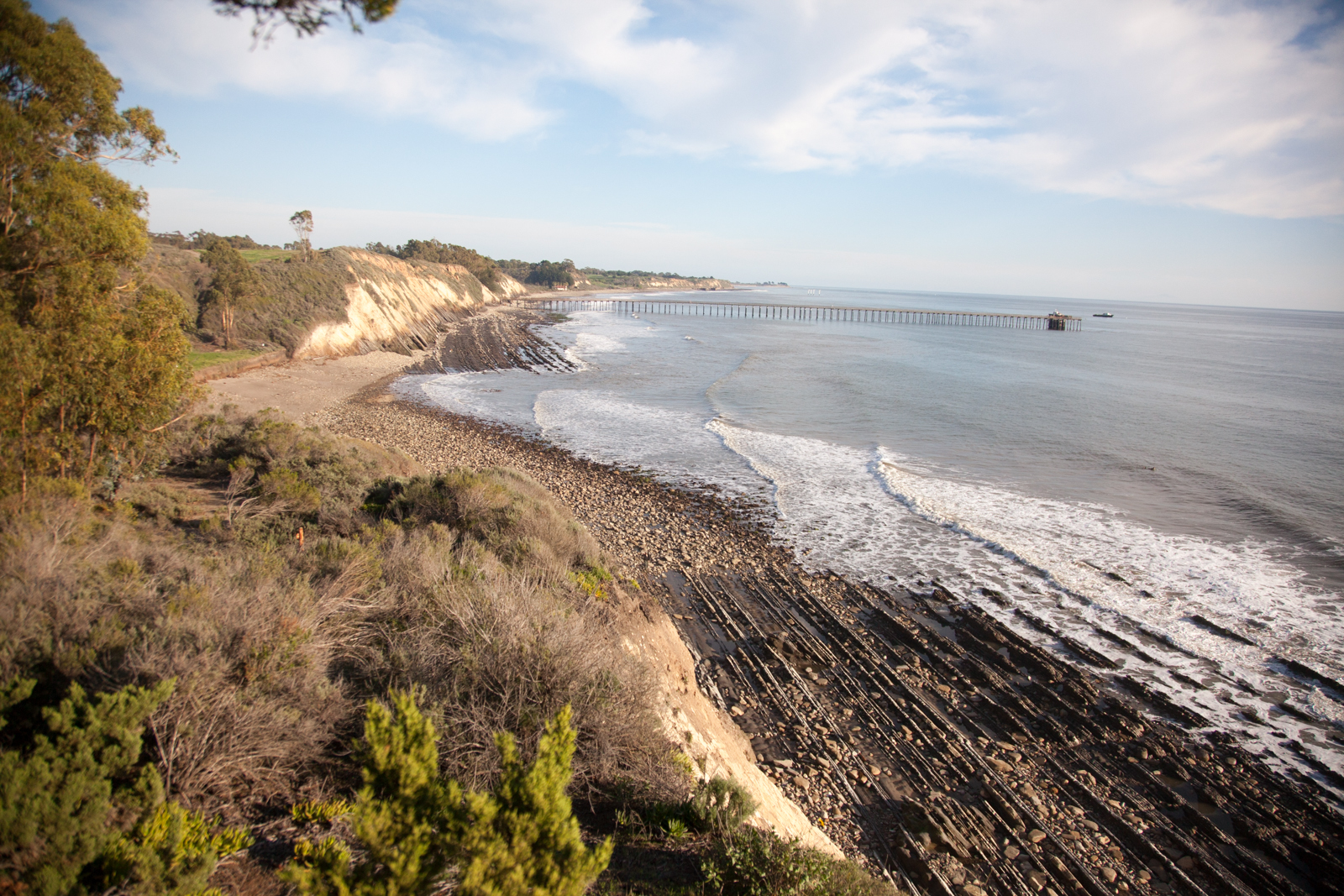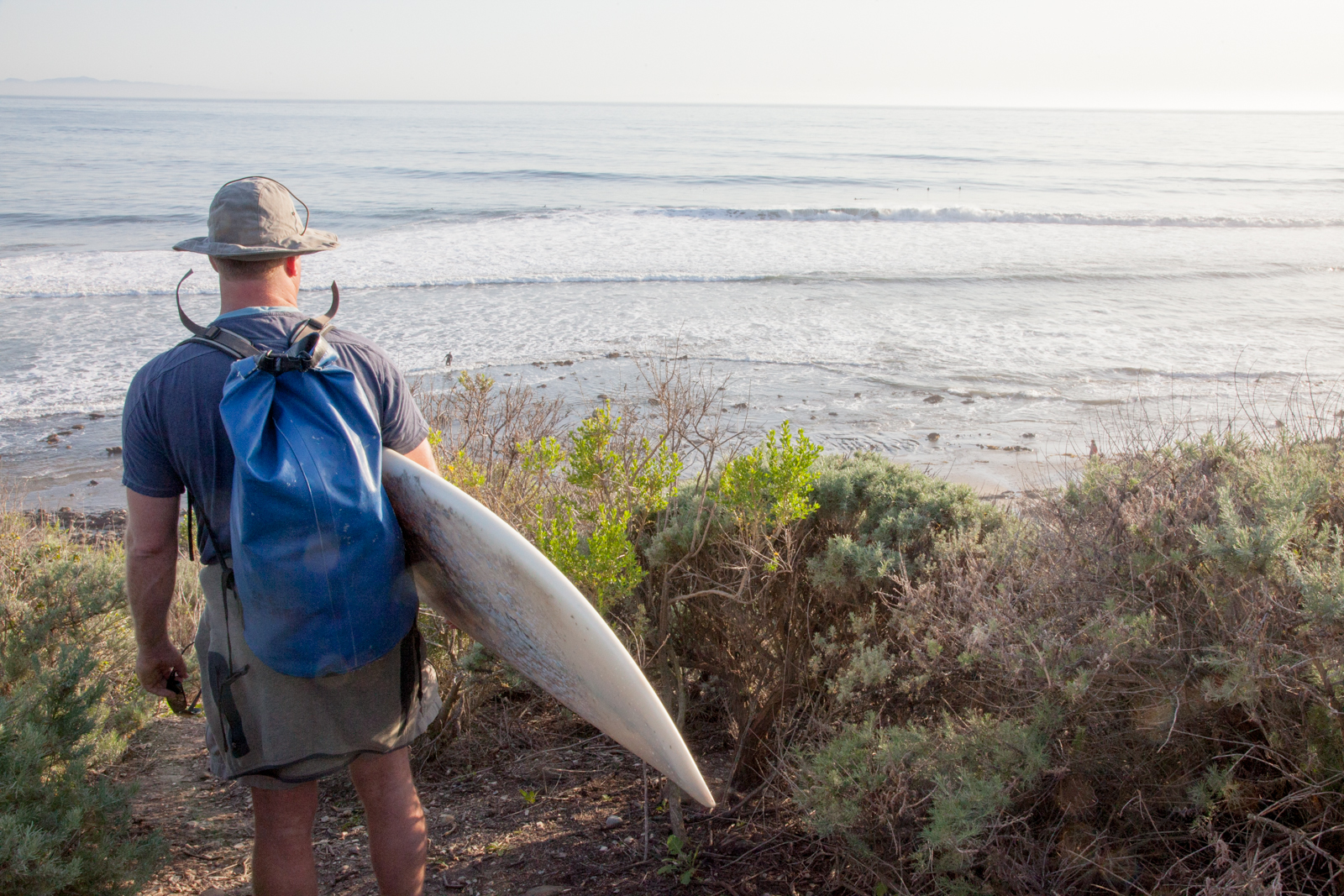Enviro, Trail Groups Appeal Paradiso del Maré Project
Say County Approval Doesn’t Do Enough to Protect Public Access, Birds, Seals
While the Gaviota Coast Community Plan recently approved for environmental review by the Board of Supervisors has generated a significant amount of controversy on its own, a number of projects on large parcels along the Gaviota Coast closer to Santa Barbara could have more immediate and long-lasting impacts on coastal development, the California Coastal Trail, and the character of the area.
Among these is the proposed Paradiso del Maré development on a mile-long stretch of the coast just a half-mile west of the Bacara Resort. The proposal for construction of two residential complexes has generated backlash within the environmental and trail communities, which are concerned about the loss of access to the Naples surf break as well as potential impacts on the while-tail kite populations and the nearby seal rookery.

In late November 2013, the County Planning Commission approved the Paradiso project. It was subject to a number of conditions and included an offer by the applicant to provide $20,000 to fund the start-up of a seal watch program similar to the one that exists for the Carpinteria rookery near the Chevron Oil Pier. On Thursday, December 19, a number of community groups, along with noted marine mammal expert Peter Howorth, announced they had filed a joint appeal of the approval.
The appellants include the Gaviota Coast Conservancy (GCC), Surfrider Foundation’s Santa Barbara Chapter, and Santa Barbara Audubon Society. Steve Ferry, copresident of the Santa Barbara Audubon Society, noted that the project would place a large house virtually on top of a white-tailed kite nest site, one that had successfully produced six fledglings earlier this year.
“The County completely failed to properly consider the effect of the project on the seal rookery,” Howorth noted. “Without a thorough impact analysis and realistic protective measures for the seals, I am convinced that the project will have an extremely detrimental effect on this site.” Ironically, the Santa Barbara Chapter of Surfrider is also a party to the complaint, despite the impacts that surfers may have had over the years through use of the surf break near the rookery. Unlike the Carpinteria rookery, which has been protected for years, seals at the Naples rookery are rarely seen on the beach during the daytime and come onshore primarily at night when the surfers are not around.

The “ocean estate” is located immediately on top of a beach-access trail long used by surfers to reach the fabled Naples breaks. “Generations of surfers and beach-goers have used trails across this property to get to the ocean,” explained Mark Morey, chair of Santa Barbara’s Surfrider Foundation Executive Committee.
“The site has extraordinary biological resources, from the white-tailed kite nests to harbor seal haul-out spots, wetlands, native grasslands, and environmentally sensitive habitat,” added GCC President Mike Lunsford. “The buildings will be visible from Highway 101 for years, until a proposed grove of small citrus trees grow to screen the project, and permanently scar the Gaviota Coast as viewed from the County’s designated public hiking trail corridor on Farren Road.”
Representatives of the developer, Brooks Street, wonder what it takes to gain approval for the project, if not the one that was given by the Planning Commission. Conditions of approval include easements for a public parking area and a mile-long section of the California Coastal Trail, preservation of the majority of the property into a conservation easement, and type conversion of large stands of mustard into habitat more suitable for white-tailed kites and the raptors’ food sources.
During the hearing at which the project was approved, biologist John Storrer, hired by County Planning to review the issues relating to the kites and seals, testified that he did not share the concerns of those filing the appeal. It was also noted that as a part of the conditions for approval, County Parks will be required to monitor both the seal rookery and kite nesting and roosting areas and to provide protection closures, something that has never been done in the past.
There is no assurance that the Board of Supervisors will hear the matter, but should that happen, the hearing is expected to be sometime this spring.



